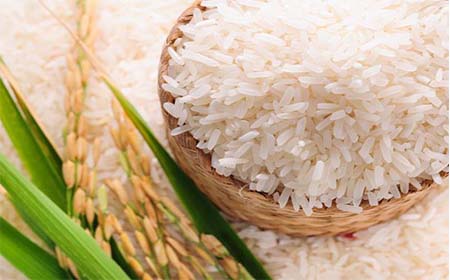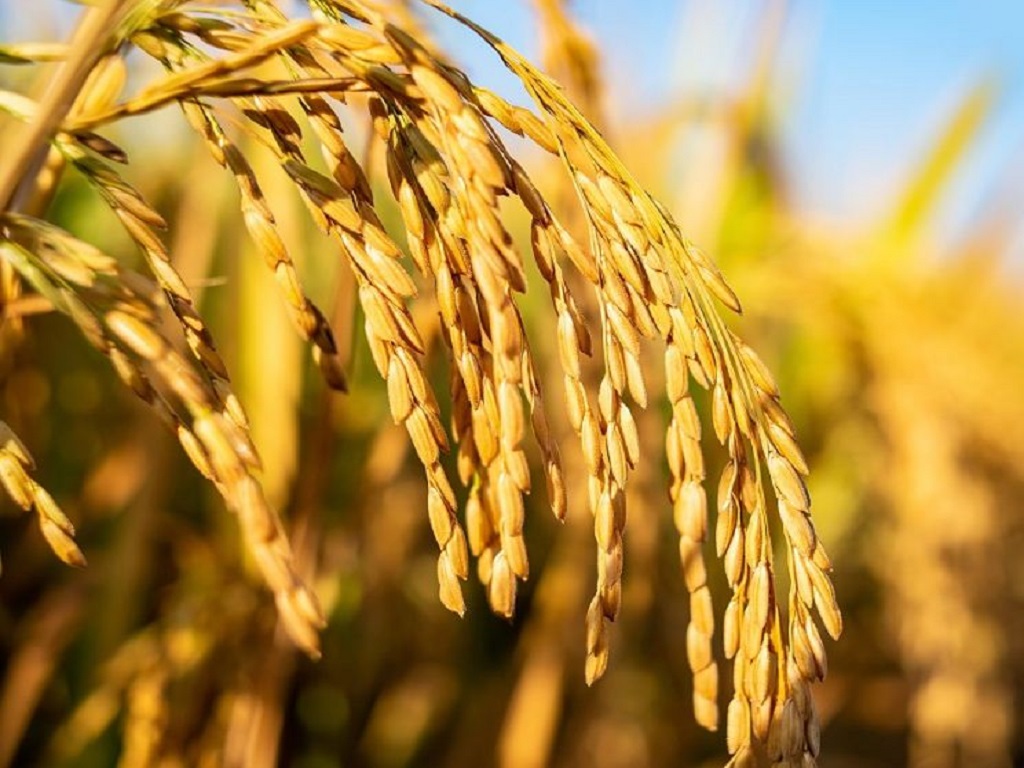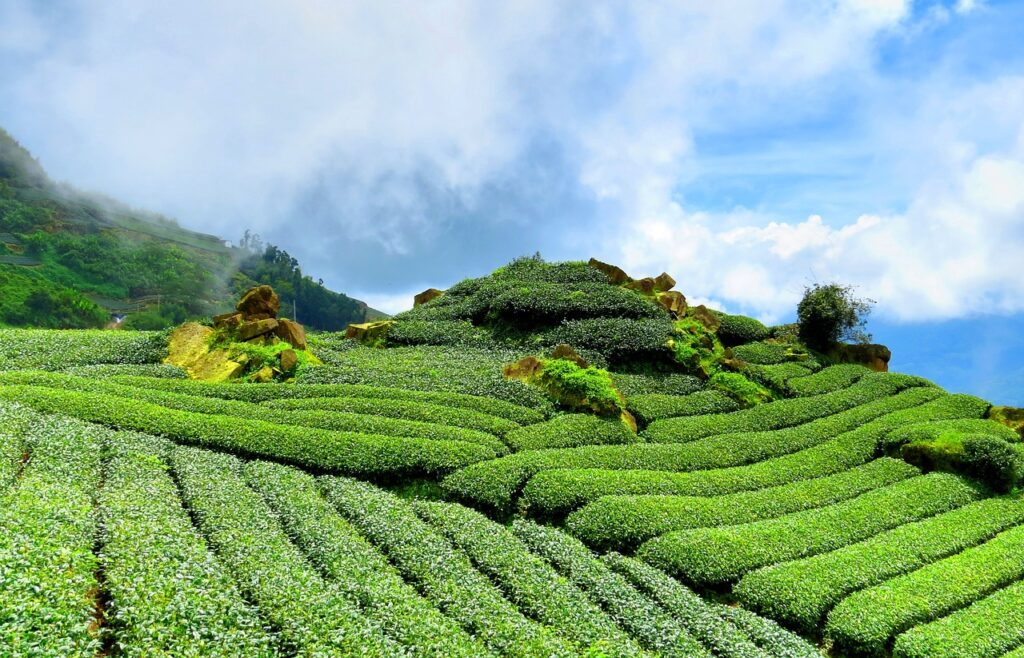Guide to Categorize Rice Varieties
There are more than 120,000 varieties of rice in the world and they are categorized by:
- kernel size: Long Grain, Medium Grain, & Short Grain
- degree of milling,
- starch content,
- processing/milling, and
- distinctive aromas & flavor.
By Kernel Size: Long-Medium-Short Grain Rice
The different strains of rice worldwide can be grouped into three basic categories, according to the size of their kernel:
- LONG GRAIN RICE: Long grain rice has a long, slender kernel, three to four times longer than its width. Kernels are 6-8mm long. Due to their starch composition, cooked grains are lighter, fluffier, and more separated than their medium or short grain counterparts. Long grain works well in pilafs, stir-fry, salad, soup, and southern favorites.
Types Of Long-Grain Rice
Texture/Taste
Uses
White Rice
Slightly sticky, fluffy texture with a high calories content
Any dishes, especially stuffing and stir-frying dishes
Brown Rice
The light nutty taste and aromatic smell
Diet food
Basmati Rice
Aromatic, flavorful taste, and airy texture; aged over time
Serve with Indian traditional side dishes, fresh herbs, and curries; make rice Pilaf
Wild Rice
Earthy, nutty flavor; tender and chewy texture; absorbs water slowly
Make soups, stew, salads, or stuff inside poultry
Red Rice
Slightly chewy and firm outside, but soft on the inside
Cook with herbs and spices
Red Cargo Rice
Tastes sweet and nutty with a chewy texture
Make into a base for summer rice salads
Jasmine Rice
Aromatic and slightly sweet taste; soft, fluffy, and sticky texture
Serve with curry dishes
Indrayani Rice
The sticky, clumpy, and slightly mushy texture
Khichdi, Pulao, Risotto, Kheer, Thai curries
Parboiled Rice
Fluffy and light texture with loose grains; light yellow to golden shade; more delicate, subtle taste and a firmer texture than white rice
Make Biryani
Mogra Rice
Super fluffy texture and distinctive taste
Pulao or Biryani
- MEDIUM GRAIN RICE: Medium grain rice has a shorter, wider kernel than long grain rice, two to three times longer than its width. Kernels are 5-6mm long. Cooked grains are moist and tender, with a tendency to cling together. Medium grain is ideal for dishes with a creamy consistency like paella or risotto, as well as Asian dishes and confections, and snacks.
Types Of Medium-Grain Rice
Texture/Taste
Uses
Black Rice
Chewy texture with a mild earthy and nutty taste
Black rice cake, porridge, bread, noodles, or many dessert dishes
Purple Thai Rice
Neutral flavor and chewy texture with gorgeous purple color
Both sweet or savory dishes; steamed rice with some coconut milk
Valencia Rice
Has a lot of starch inside, absorbs much water; has a sticky, creamy texture; turns softer quickly
Spanish Paella, rice pudding, soups, and stews
Rosematta Rice
Earthy taste
Steamed and paired with beef, lamb, or mutton
Sona Masuri
Lightweight texture with an aromatic smell
Sweet Pongal, Biryani, Idlis, or fried rice
- SHORT GRAIN RICE: Short-grain rice has a short, plump, almost round kernel. Kernels are 4-5mm long. Cooked grains are soft and stickier than other varieties with a slight springiness to the bite. Similar to medium grain, short grain rice is ideal for dishes with a creamy consistency, sweet, and Asian dishes.
Types Of Short-Grain Rice
Texture/Taste
Uses
Glutinous Rice
Sticky, glutinous, and super chewy
Make Asian traditional cakes and dishes (Japanese Mochi, Sekihan, or Vietnamese Xôi)
Bamboo Rice
Moist and sticky texture; treated with young bamboo plant liquid, aromatic flavor of jasmine green tea; attractive jade hue and delicate, subtle flavor
Risotto-like dishes, Sushi; serve with stir-fry like pork chops and salmon
Sushi Rice
Includes a high starch content
Mainly to make Sushi, seafood-included dishes
Bomba Rice
Contains a high content of amylose, consistent texture, chewy
Paella, Arroz a Banda, Risotto, or regular table rice
Arborio Rice
Has a chewy and creamy, firm texture
Traditional Italian dishes like Risotto, Arancini, and Minestrone
Samba Rice
Very short and hard grains, resulting in less fluffy texture; high fiber content, and corny flavor
Indian traditional dish called Biriyani
By Degree of Milling
Rice can be classified as rough or paddy rice, which is rice as it is harvested in the husk, whole grain (brown) rice with the husk removed, or white rice with the bran layer removed.
- ROUGH RICE: Rough Rice or Paddy Rice is completely unprocessed. Because it includes the hard fibrous hull, rough rice is indigestible and is not used for human consumption. It is raw whole grain, containing the hull, bran, endosperm, and germ.
- WHOLE GRAIN RICE: Whole Grain Rice (e.g., brown rice) is milled to have the hull removed, leaving the bran layer intact. It is 100 percent whole grain, containing the bran, endosperm, and germ.
- WHITE RICE: The Rice paddy is milled to remove the outer husk, bran layers, and germ to get white rice. It is a grain, containing endosperm only. This process increases shelf life but removes much of its nutrition, including fiber, vitamins, and minerals. To counteract this, white rice sometimes is artificially fortified with nutrients.
By Starch Content: Sticky & Non-Sticky Rice
What makes Rice Sticky and Non-Sticky?
The Starch in Rice: Amylose and Amylopectin
Starch is a colorless and odorless polysaccharide. The Plant maintains it as their storage carbohydrates. The polymer of glucose monomers links together to form a polysaccharide. The amount of each starch, which is different for every type of rice, determines the texture of the cooked rice and whether it will be fluffy, creamy, or sticky. As rice cooks, both the heat and liquid penetrate the grain, and the starch molecules inside the grain break down. Each starch carries out a different task once they absorb liquid.
Starch is composed of two types of polysaccharide molecules:
- Amylose
- Amylopectin
Each of those molecules reacts differently when introduced to water at cooking temperatures. To layman’s knowledge, the sticky or non-sticky characteristic of any rice depends on the percentage of amylose and amylopectin molecules present in the rice.
- Amylose is a long, straight starch molecule that does not gelatinize during cooking. That’s why Grains with high amounts of amylose will remain fully and separated once cooked. Long grain rice, typically has high amounts of amylose (about 21-30%) and the least amount of amylopectin.
- Amylopectin is a highly branched starch molecule that is responsible for making rice gelatinous and sticky. Rice with a high amount of amylopectin will be very sticky once cooked.
To further understand let’s consider the two subspecies of Oryza sativa rice varieties, that is, indica or japonica. The indica varieties are mostly long-grained, slender somewhat flat, and the spikelets are awnless. These grains shatter more easily and have 21-30% amylose polysaccharide molecules. But the japonica varieties are short-grained, roundish, and the spikelets are awnless to long-awned. The grains of japonica do not shatter easily and have less amylose and high amylopectin. That’s the reason indica variety rice, like Basmati, Jasmin, and others are less sticky once cooked than any japonica short-grained variety rice.
The characteristics of some medium grain rice tend to fall somewhere in between. They typically contain about 15-17% amylose and a good amount of amylopectin which results in a creamy consistency (Italian, Arborio, and paella-style types of rice). In the same way, Sticky rice (a.k.a., glutinous, waxy, or sweet rice) is very sticky when cooked. It contains the highest amount of amylopectin and no amylose. Sweet dishes in Asia require this rice. But “Glutenous,” which means “containing gluten” is absolutely different from Glutinous and there should not be any confusion between them. Rice is a gluten-free grain.





